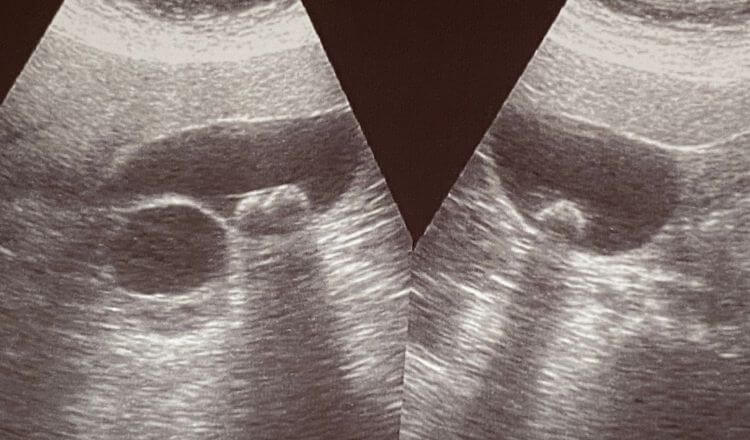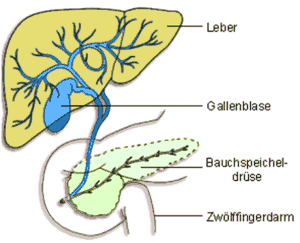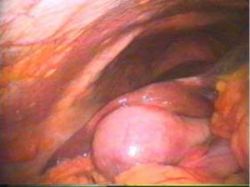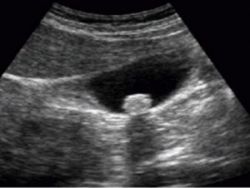
Gallstones:
Inflammation of the Gallbladder
The gallbladder (Cholecyst) is an organ that stores bile or gall and releases it into the intestinal tract through the bile duct.
Inflammation of the gallbladder (Cholecystitis) is usually caused by gallstones. Gallstones are formed when the bile in the gallbladder becomes over concentrated and crystallizes into stones. Gallstones can occur anywhere in the gallbladder and the biliary tract causing extreme pain and jaundice.

Gallstones are more common in women than men, and about 25% of those who have gallstones will eventually have inflammation of the gallbladder. A chronic inflammation of the gallbladder can lead to contracted gallbladder and in some cases to gallbladder cancer.
Untreated, an inflammation of the gallbladder can in some cases lead to ruptured gallbladder. Infected matter seeps into the abdominal cavity causing peritonitis. The main bile duct to the intestines may become obstructed causing further infections. Cholangitis is an inflammation that occurs when the biliary duct becomes obstructed by small sand grain sized gallstones. Pancreatitis is inflammation of the pancreas and is caused by small stones obstructing the end of the bile duct.
Gallstones are more common
women than in men
Gallbladder removal only
prevents stone formation
Minimally invasive or
open surgical method
Symptoms
- Gall colic is extreme camps in the abdomen lasting several minutes.
- Pain in right upper abdominal quadrant with radiating pain to the back and right shoulder.
- Pain and discomfort occurring during or after a meal, especially after meals high in fats.
- Nausea and vomiting
- Fever and chills
Diagnosis
A patient’s symptoms are usually enough to suggest gallstones. Diagnostic procedures include:
- Ultra sound examination. Gallstones show up clearly on the monitor.
- Laboratory examination
- Endoscopy of the gallbladder
- Gastroscopy to eliminate ulceration of the stomach or intestine as cause of the symptoms


Testimonial from a patient:
Very nice place, I had nice experience there with operation and the doctor is very careful and taking good care after my surgery.
Source: Google

Therapy
Many people have gallstone but never have symptoms. These patients do not require therapy. Occasional symptoms can usually be dealt with using painkillers and dietary restriction against fatty foods and alcohol. There are medications that can dissolve the stones, but the stone reoccur once the medicine is stopped, and incompletely dissolved gall stones can cause further complications by obstructing the biliary duct.
The only long term effective therapy is Cholecystectomy (removal of the gallbladder). Simply removing the gallstones is no longer used in therapy because of the certain immediate reoccurrence of gallstones and painful symptoms. Complete removal of the gallbladder is the only permanent solution.
Operation
There are two surgical procedures for Cholecystectomy (removal of the gallbladder).
Minimal Invasive Cholecystectomy:
Conventional open Laparotomy:
If there are medical complications such as blood clotting dysfunction, Cardiological-Pulmonary diseases, or scarring from previous operations precluding a minimal invasive procedure, a laparotomy is performed. This is removal of the gallbladder through a large incision in the right side of the abdomen.
Stones that have formed in the biliary or pancreatic duct can be removed using Endoscopic retrograde cholangiopancreatography (or ERCP). If this is not possible, the duct is opened, the stones removed and a special drainage line (T-drainage) attached.
Prognosis
Patients can leave the hospital after 3-4 days after the operation and can return to work after about 7-10 days. Gallstones do not normally return after removal of the gallbladder. People can live without the gallbladder because it is merely a storage container for bile produced by the liver. Without the gallbladder, the bile required for digestion flows directly from the liver to the intestines. There are no dietary restrictions following gallbladder removal. The operation is routine (many hundreds of thousands per year are performed) and millions of people live without a gallbladder.
Notice: Preoperative preparation: Please inform your physician if you are taking blood thinning medication such as Aspirin® and Marcumar® as they may lead to complications during surgery.
Your health is
important to us
Office Hours
Monday, Tuesday, Wednesday: 8:30 – 16:00
Thursday: 8:30 – 18:00
Friday: 8:30 – 13:00
and by appointment
